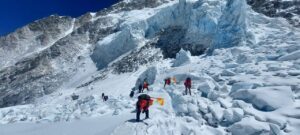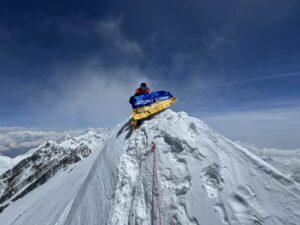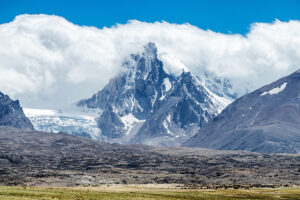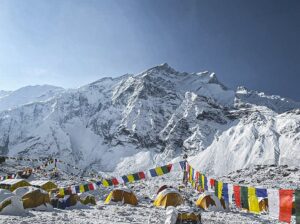Every year around this time, ExplorersWeb usually offers its take on the top expeditions of the past 12 months. In 2020, because of COVID-19, there have been too few expeditions to compile a meaningful list. Instead, we’ve taken a more wide-angle view and put together our list of the top expeditions of the last 50 years.
Obviously, any such compilation is wide open to debate. How do you compare climbing and kayaking? How do you rank rowing across the Pacific with skiing to the North Pole? We debated the choices among ourselves and consulted with experts outside ExWeb. Still, we’re happy to admit that this is but one such possible list, covering all aspects of adventure in the last half-century. Feel free to offer your alternatives in the Comments section of this countdown.
At the very least, this list reminds us about some of the very best adventures of modern times, some indelibly imprinted on our minds, some all but forgotten over the years.
Every year or two, there are breaking stories in the adventure world that stop you in your tracks. Andrzej Bargiel’s remarkably uneventful first ski descent of K2 was one of those. On the day of the event, I nervously hovered over my computer, waiting for the GPS dot on the screen to update. I half-expected the live updates to cease due to a mortal accident. Those were the stakes at play on July 22, 2018.
Before Bargiel came along, some of the world’s best had tried and failed to weave down K2 on planks. In 2001, the legendary Italian Hans Kammerlander watched a Korean climber shoot past to his death only a couple of hundred metres below the summit. Reminded of his own fragility, Kammerlander doffed his skis and climbed down on foot instead. Once back to safety, he remarked: “Somebody will do it, but he’ll need a lot of ability and a whole lot of luck.”
No such luck befell Swedish ski mountaineer Fredrik Ericsson, who died after a fall near the infamous Bottleneck ice gully in 2010. Nor American Dave Watson, who abandoned his second attempt in 2009 because of unstable snow at 8,350m.

K2 from a drone at 8400m. Photo: Bartek Bargiel
Prior to K2, the ambitious young Polish ski mountaineer Andrzej Bargiel had skied three 8,000’ers — Shishapangma in 2013, Manaslu in 2014, and Broad Peak (a first ski descent) in 2015. By 2017, he judged himself ready to try K2. Bargiel was not successful that summer, though he did manage to get a good look at his planned descent route, making it halfway up amid incoming storms.
The following summer, after completing the necessary acclimatization, Bargiel left K2 Base Camp on July 19. Unlike most climbers on K2, he went up without oxygen and via the Basque/Cesen route. At Camp 3 (7,300m), the vastly experienced Polish climber Janusz Golab waited to support the ascent. Unfortunately, Golab was suffering from severe back pain, and Bargiel had to patiently tend to his friend, including arranging the remarkable delivery of medication by a drone piloted by his brother Bartek (the use of which was another outstanding feature of this expedition).

Nothing says good luck better than a fist bump. Andrzej Bargiel gets ready to head high on K2 in full Red Bull regalia. Photo: Marek Ogien
After 36 hours at Camp 3, Bargiel pushed on alone to Camp 4 (7,600m), where he rested overnight before the final push. By midday on July 22, he had summited and tentatively strapped on his skis. Unlike some earlier attempts, which tried to descend via the Abruzzi Spur (or normal route), Bargiel planned to deviate onto the steep South Face. Real climbing territory.
Leaving the summit, the fearless Pole carved his way past ascending climbers and kept his nerve amid avalanche-prone slopes and steep icy patches. After one rappel (50m) to get around the infamous Bottleneck gully, he continued descending until Camp 4. Here, he linked up with the Basque/Cesen route and pointed his tips into unknown skiing territory.
Bargiel safely reached Camp 3 but still had to sidestep the dizzying arete of the Messner Traverse, where one wrong step would be fatal. Added to the risk of falling, ice seracs loomed ominously overhead. “There are only two safe windows: very early in the morning and in the afternoon between two and three p.m. You don’t want to postpone it too late, because the ice freezes too quickly, and this can cause the seracs to fall,” he explained later.
Bargiel’s brother Bartek filmed Andrzej throughout, piloting three drones, including one that reached the summit of K2. It didn’t have the juice to descend again, so poor Andrzej had to ski down with the device in his backpack. Bartek even forced his brother to stop skiing occasionally while he exchanged batteries, or when he couldn’t locate him among K2’s vast slopes. Most interestingly, Bartek used the visual feedback from the drones to provide real-time route information to his brother over the radio.

In the shadow of a serac. Photo: Red Bull
After negotiating further steep ground on the Kukuczka-Piotrowski route and the crevasse-riven lower snowfields, the Polish pioneer arrived back at Base Camp at around 6:30 pm. Seven hours, 3,700m of blue ice, heavy, wet, snow slabs, steep, steep ground, knife-edge aretes, and quite frankly, death around every corner.
So how to contextualize? Not just a first ski descent, but alone, without oxygen, on possibly the hardest 8,000’er, and the one that is universally known as the Savage Mountain. Most observers, even those who had tried before, would no doubt have given long odds on success. And it doesn’t seem likely that anyone will make a second descent any time soon. This clearly deserves to go down as a once-in-a-generation accomplishment.
But for all the technical, physical, and psychological mastery, some might argue that extreme skiing on an 8,000m peak is esoteric, and the necessary sidestepping and inching and sliding with an ice ax perhaps lacking in aesthetic. Most prestige expeditions succeed at ever more difficult ascents, not descents. And no matter how challenging, ski descents had previously been completed on 8,000’ers, making this less of a sea change than some other expeditions. These minor issues hold back this feat from placing higher on our list.
Overall, though, American skier Dave Watson captures the magnitude of the descent best: “He climbed to the bottom of space, the stratosphere basically, without oxygen, and skied down. By himself. This is on the same level of human achievement as Alex Honnold climbing El Capitan without a rope.”
—
You can watch the full documentary of Andrzej Bargiel’s descent, for free, here.






